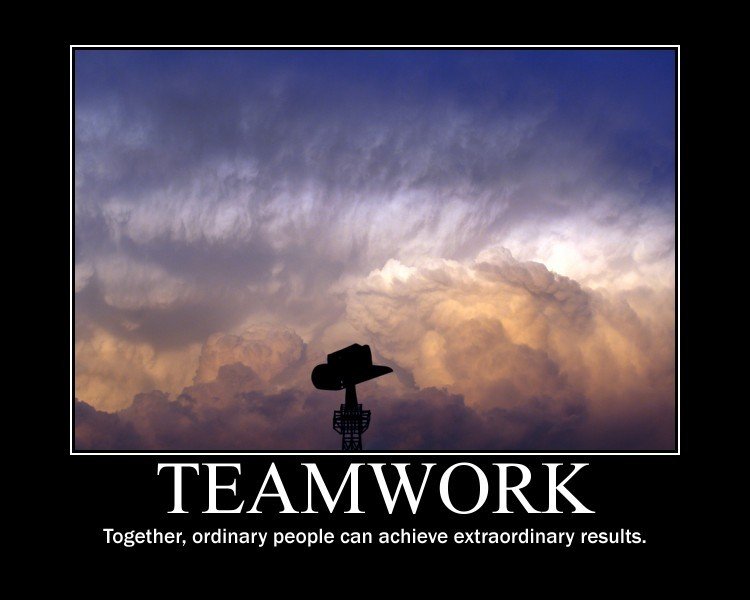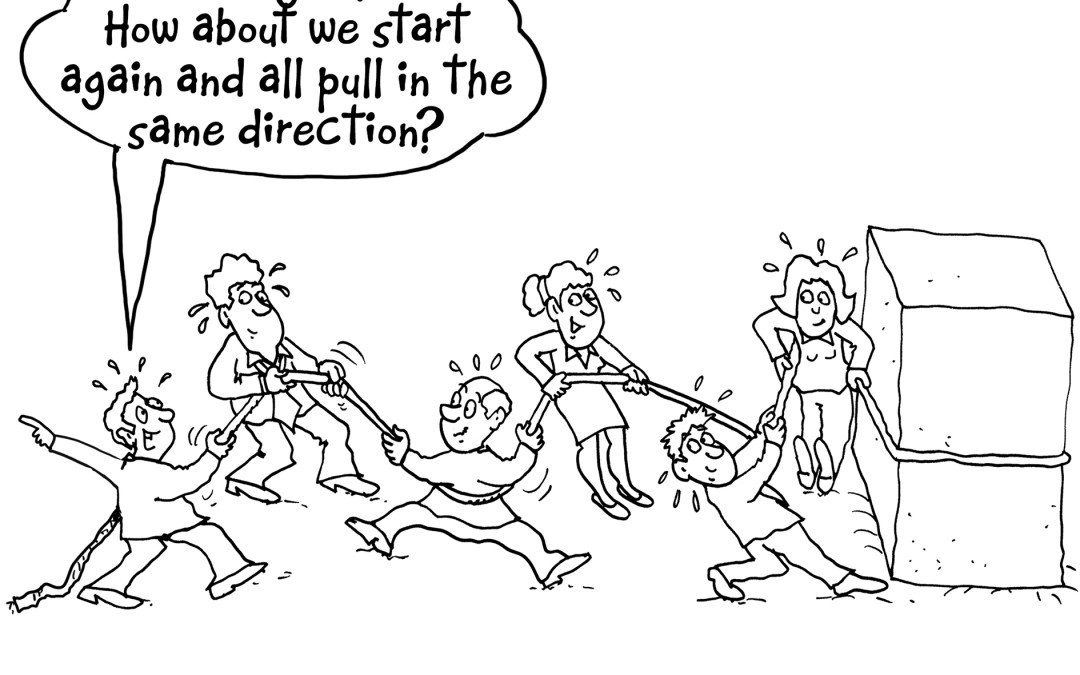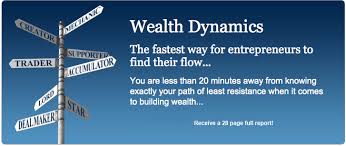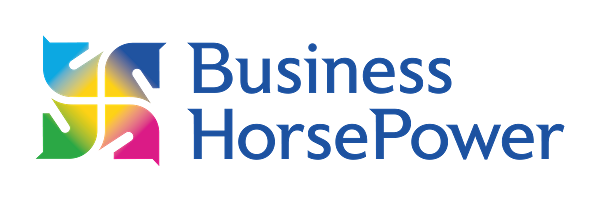
by Julia Felton | Feb 5, 2017
Given the choice, would you work with someone who’s similar to you and shares your views? Or would you prefer to work with someone who’s quite dissimilar, and has a different perspective?
Research suggests that we make better decisions in diverse groups than in homogeneous ones, but that we feel less confident in those decisions. Why? Maybe because making decisions with people similar to us feels easy; if we’re all on the same page from the start it must be the right page, mustn’t it? The overconfidence that we’re prone to individually, gets multiplied in homogeneous groups.
On the other hand, making a decision with a bunch of people who have different perspectives can be a struggle. In a diverse group people often voice divergent views. They disagree with one another. Someone likely needs to compromise. And the whole thing can just feel a bit rocky. The decision may be better, but it doesn’t always feel better.
So teams need to ask themselves what they would rather have, an inferior decision that you feel really good about? Or a superior one, that doesn’t sit quite as well? Most of us would say we want the superior decision of course, but our actions typically don’t always back this up. A study has shown that despite the improved performance teams gain from the presence of a having someone who challenges the norms and provides a different perspective, when given the option to remove this team member most groups will will. Why, because inherently we are seeking harmony and want to avoid any situation that rocks the boat.
Further, there’s working with someone different from you, and then there’s working with someone really different from you. In Talent Dynamics team member profiles are comprise of four different energies. And although many people typically have a mix of all the energies, it is notable that the energies that are in direct opposition to each other are likely to find their counterpart more challenging. For example, the more Dynamo energy you have in your profile, typically the less Tempo energy you have (and vice-versa). Dynamo people are concerned with the big picture and are fast thinkers whereas tempo driven people are generally more grounded and act in slower, more methodical fashion. Likewise, the more Blaze energy you have, which means the more outgoing and people-focused you are, the less likely you are to connect with Steel energy people who value the task over relationships (and vice-versa again). Working with your “opposite type” can be most challenging of all, but it also may have the greatest opportunity for some real complementary value.
I often work with teams who’re grappling with this challenge. They know diversity can make them stronger, but when the going gets tough they need a bit of a reminder why it’s worth the effort. In these times I like to do an exercise called Power of Opposites. I ask groups of like-type individuals to brainstorm the value brought to the team by their opposite-type colleagues. And then we ask them to share their appreciation out-loud. In the best cases it can become a real love-fest. And it helps build goodwill among colleagues who may have a hard time working together.
Here are some of the highlights of what our teams have had to say:
Dynamo people love Tempo team members because they…
- are grounded and practical
- great at getting tasks completed
- are full of new and interesting ideas
Tempo team members love Dynamo energy people because they…
- see the big picture
- great at getting things started
- keep us moving forward at a swift pace
Steel team members love blaze team members because they…
- bring a collaborative spirit to the team
- keep an eye on team morale
- encourage us to include diverse views
Blaze team members love steel team members because they…
- help us keep track of the details
- keep us focused
- keep us out of trouble as very cautious
Does your team need a little extra incentive to embrace the challenge of working across types? You might want to try out this exercise yourself. And if you’re personally struggling to appreciate an opposite type colleague, you can even do this on your own. Why not start by sharing your thoughts here. What are your favorite things about your opposite type?
And if you are not sure which energy type you are then find out more and take the Talent Dynamics assessment here. I guarantee this will be the best investment you make, as it will help you get into flow and raise your awareness of how you interact with others.

by Julia Felton | Mar 27, 2016
This blog is inspired by the work of Jim Rohn and the fact that Spring, the season of sowing and planting has just begun. As a Creator type (Talent Dynamics) it is my favourite time of year. It is the time when I get to explore new ideas and strategise (and prioritise) for the upcoming year. Now I know most people say do this in January but I love to work with the seasons of the year so Spring is my time for plating and initiating all my new projects for the year.
As I’ve been reflecting on what projects (seeds) to plant for this I have been reminded of the first of the basic law of leadership: Whatever you sow, you reap.
In other words, in order to reap rewards (i.e. get success), you must first sow. You must take action and put your ideas into practice otherwise you will never be able to reap. Reaping is reserved for those who sow, who plant. To deserve the harvest, you must plant the seed. Take care of it in the summer. Carefully harvest it and then do wise things with the harvest.
Now, there is a second part to the law which states: If you sow good, you reap good. If you sow bad, you reap bad. This means you cannot sow badly and then hope for good. You can’t plant weeds and hope for flowers.
Here’s something else about the law of sowing and reaping. You don’t reap only what you sow. That’s important to understand. You reap much more than what you sow. If you just reaped what you sow, what’s the exercise for?
It is also important to understand that the law works in both positive and negative, so be careful what you sow. An old prophet once said, “If you sow the wind, you don’t reap wind, you reap a whirlwind.” Therefore you’ve got to be careful sowing the wind, because it might just come back as a whirlwind. That’s on the negative side. But now it also works on the positive side. If you plant a cup of corn, how much do you get back—a cup? No, a bushel for the cup. You get back much more than what you plant. That’s the reason for planting—for the increase.
The final key to the law of sowing and reaping is:. Sometimes it doesn’t work at all. Everybody has to understand. The farmer plants the crop in the spring and takes care of it all summer. He’s an honorable man. Loves his family and is a decent citizen. But the day before he sends the combine harvesters into the field, a hailstorm comes along and beats his crop into the ground. And it’s gone. It’s lost.
So this time it didn’t work. Now what must the farmer do? He’s got to decide whether to do it again or not. “Shall we take another chance the next spring?” I would advise him to do so even though he lost everything in the last harvest because more often than not, you’ll have a harvest if you plant in the spring. There’s no guarantee, but it’s pretty good odds.
And it’s the same in business. We need to carefully select what we want to sow and then we have to nurture the seed (project, programme etc) until it is the right time to harvest. If we pull up the seeds too early and give up on projects before they have had time to get established then we will never reap the benefits of the harvest. And this is what I see a lot of clients doing. They give up on their dreams just before the harvest period. And of course like the analogy goes, even despite all our good work the crop (business or project) might still fail. And what do you do then. I suggest be like the farmer, dust yourself off and have another go. After all the law of probability will probably come into play meaning that the likelihood of failure will be diminished, assuming of course that you learn from your mistakes and don’t replicate them.

by Julia Felton | Feb 9, 2016
What if I told there are 8 different personality types and each profile has specific strengths they can bring to your business? Would you put people in the right roles for their profile.? I bet you would because that would bring massive efficiencies in the business and make productivity and profitability increase.
So why is it that time and time again I come across people working in the wrong roles – ones that don’t utilize their strengths – or where they can’t add real value to the team?
One of the reasons for this is that in my opinion most job descriptions are fundamentally flawed. We want team members to undertake a myriad of tasks that are diametrically opposed and require very differing skills sets.
Talent Dynamics is a business development tool that identifies that within everyone there are four different frequencies and each person has a preference for one type of frequency. Maybe you are a:
- Dynamo: energized, dynamic and great at getting things started. Getting things finished can be a challenge
- Blaze: passionate, outgoing, great at networking and meeting new people. Easily distracted by the task at hand
- Tempo: compassionate, great team player and reliable at getting things done with the team. Other seeks direction from others
- Steel: orderly, systems orientated with a good eye for detail, strong at completing. Can find it difficult to start new things.
Given our redisposition towards one of these frequencies can you now see how a job description that requires someone to create the strategy and have a big picture perspective (dynamo energy) will struggle with customer follow up and attention to detail (much more a tempo/steel activity).
Let me give you an example of a job description for a secretary that I have just pulled from the web. Look at all the different types of frequencies that the role requires.
- devising and maintaining office systems; (dynamo)
- booking rooms and conference facilities; (tempo)
- using content management systems to maintain and update websites and internal databases; (steel)
- attending meetings, taking minutes and keeping notes; (tempo)
- managing and maintaining budgets, as well as invoicing; (steel)
- liaising with staff in other departments and with external contacts; (blaze)
- liaising with colleagues and external contacts to book travel and accommodation; (tempo)
- organising and storing paperwork, documents and computer-based information; (dynamo)
- recruiting, training and supervising junior staff and delegating work as required; (blaze)
- manipulating statistical data; (steel)
Wow, not only is that a lot to cover but it requires someone with super human powers as it is simply impossible for someone to have strengths in all these areas.
When we ask team members to work across the different frequencies it is challenging for them and they certainly don’t deliver the most value to the business. Often they end up stressed doing the parts of the role that don’t resonate with them, or in the worst cases they don’t do this part of the role at all.
I remember when I was leading teams in the corporate world how at every staff appraisal I used to get team members to focus on developing the areas they were weakest at. This was before I had been exposed to Talent Dynamics. I now realize that if my data manager (who had a lot of Blaze energy) had been allowed to shine by engaging and motivating my team members how much more valuable she would have been to the team than left analyzing data which is a very steel type activity (and one she hated and to be fair wasn’t that great at).
And with my own role I loved it to begin with creating a new department and designing a new innovative product. My dynamo energy was ignited and I was on fire creating a pioneering solution for the hospitality industry. Contrast that with later in my career when I had grown the business to be the global market leader in its niche. My role changed and instead of creating new solutions I was charged with managing the team – a real blaze role – and one that I did not relish. My value to the company diminished as I was not fulfilling my potential since I wasn’t doing what I was naturally gifted to do.
I hope you now see how often we design roles for people that they can never really succeed at. A better approach would be to ensure that you have a number of different roles in the team that cover all the different frequencies. And ensure that people are working in the roles that best resonate with their natural strengths.
Also, beware of always hiring people like you as you will just get more of the same and the tasks that you don’t like doing still won’t get done as they are not the natural skill sets of the person you hired. This is exactly what I experienced recently working with a client in the media sector. All the people in the team were super creative types with lots of dynamo and blaze energy and there was very little steel and temp energy in the group. The result was that the team weren’t good at managing the finances of the group or mastering follow up.
Just like a wheel of life there needs to be a balance of these different energies in your business. Have a look at your business now and the roles that you have identified for your team members. Do they need refining to better use each individuals skills?
To find out how you can use Talent Dynamics to help you rewrite your job descriptions or help you identify the roles that speak to your natural strengths please feel free to connect with me at Julia@businesshorsepower.com.

by Julia Felton | Jan 31, 2016
When you are building your team it is essential that you find the right person for the role. I know given the tough economic conditions we’ve been through recently that it is tempting for a candidate to apply for any job for and for the business owner who needs to find resource to accept a less and ideal candidate
Stop. This is such a flawed strategy for both parties and ultimately ends up costing everyone valuable time, energy and money as:
- The applicant ultimately won’t enjoy the job. Sure they might be able to do the role, but are they giving 110% to it. If the role is not aligned to their own passion and purpose they simply won’t be as productive or creative in the role as they could be.
- For the employer they are not utilizing the employees best strengths and so ultimately the productivity and engagement of the team member declines and the net result is less profitability for the business.
What both parties crave for is a situation where the team member is working to their strengths, and delivering massive value to the business . This occurs when the team member is in a state we call flow. Put simply, flow is the path of least resistance. When team members are in flow, productivity rises, results increase, occurrences line up, everyone has more fun and feels more connected to the organisation and it’s goals.
When a team member is in flow they feel energised, focused and fully engaged in the task at hand. Often there can be a distortion of time as their internal clock does not seem to match the external clock – perhaps you have experienced this when you have been doing something you love and time just literally seems to fly by. That’s a time that you were in flow.
So how do you know if you are in flow:
- If you are feeling stressed, overwhelmed or anxious, then it’s a fairly good indicator you are out of Flow.
- The opposite is true when you are in Flow, you feel joy and even rapture whilst performing the task. In the work place, this results in a harmonious environment.
The challenge I come across time and time again are team members that are in the wrong roles. They are not playing to their strengths and as a result the are sabotaging the success of the business. This is not usually intentional it is just that unless you are in flow you are unlikely to be able to access the hidden 90% of your potential that exists.
Imagine the benefits if all your team members were operating at or above their peak performance level. Imagine what an impact that would have both on the motivation of the employee but also on the organizational results. Customers would feel more cared for, projects would get delivered on time and the harmony in the workplace would be infectious. This is the type of workplace where trust pervades as everyone is doing their role to their very best.
One tool that I use to help my clients and their business get into flow is something called Talent Dynamics. Based on an ancient Chinese philosophy, the I Ching, it allows each person in a team or organisation to understand the quickest and easiest way for them to get into and stay in Flow by working with their strengths. It also helps them understand where they are most able to add value to the organisation. Simply, by understanding the value you contribute to a team, then you can immediately help identify potential Business Development opportunities.
If you are leading a team then I highly recommend profiling your entire team so you can create mutual understanding and get the whole team into flow. Understanding the strengths of team mates and how they contribute and add value to the business allows you to better communicate and it is easier to gain trust and respect with each other and so deliver results in performance and profitability.
So whether you’re a potential employee or a business owner looking to expand your team make sure that you find the perfect person for – one that speaks to their strengths and where they can add real value.
The first step to finding out your strengths is to identify where you are most trusted in business. You can take the quick 2 minute assessment at http://bit.ly/trusttest.

by Julia Felton | Sep 22, 2015
Your flow comes from following your natural path. Your team momentum comes from each team member following their natural path. Each frequency and each profile has a different role within the team where they can be most effective. Often the best team selection is not the person who can be most effective, but the person who enables the existing team to become more effective.
Here are the 8 profiles, and the role within the team that allows them to be in their greatest flow:
Creator: The initiator
Creators are the best initiators, and although they can be quick to create chaos, they can also be surprisingly innovative at finding ways out of chaos. Always put them in charge of new projects, but move them on to the next creation once their job is done.
Star: The promoter
Stars are the best promoters, but need to lead from the front. Give them the chance to shine, and give them the space to deliver results without tying them down. Give them the systems and support to enable them to focus on building new business.
Supporter: The leader
Supporters are the best leaders, but don’t expect them to come up with the plan. Build a plan and set the goals with a Supporter, and then let them lead the team towards the plan. Let them set their own management style, and their own agenda.
Deal Maker: The peace maker
Deal Makers are the best peacemakers, and will leave everyone feeling good. Don’t expect them to go out cold calling, as they thrive on building the relationships they have. Work with Deal Makers to nurture the customer and relationships you have.
Trader: The negotiator
Traders are your best negotiators. They will always get you the best price, in both what you buy and what you sell. They want to be given the parameters in which to work. Traders will have their ear to the ground in your market and your team.
Accumulator: The ambassador
Accumulators are your best ambassadors. They are reliable, get things done on time, and are not prone to making rash decisions. Accumulators make the best project managers, when a specific task needs to be delivered reliably.
Lord: The analyst
Lords are your best analysts. Give them the space to study the detail, and to deliver the data. Don’t ask them to go out and network, as they are strongest when focused behind the scenes.
Mechanic: The completer
Mechanics are your best completers. They will wrap up the process and find smart ways to do it better next time. Don’t ask a mechanic to start from scratch, but do give them an existing process or product to improve on.

by Julia Felton | Sep 16, 2015
Have you noticed how for some people, no matter how much money they get, it just disappears? Whereas for many wealthy people, you can take all their money away and it comes right back again. This is best explained by the “Wealth Paradox”, which states:
“The more money you have, the more opportunities you have to lose it.”
Without true wealth, all the money that flows through you will disappear. So how do we define wealth? Roger James Hamilton defines wealth like this:
“Wealth isn’t how much money you have. Wealth is what you’re left with if you lose all your money.”
Wealth creators focus at chasing water upstream. Instead, they create a river of flow. There is trillions of dollars flowing around our planet every day, so you don’t need to make money, you simply need to direct it. As Roger says,
“Wealth isn’t about making money. It’s simply about good plumbing.”
We each have a natural way to create our river, and this is how the Wealth Dynamics square is formed. This becomes easier to understand when we see the wealth equation:
WEALTH = VALUE x LEVERAGE
Water always flows from high ground to low ground. Money always flows from high value to low value. Whoever values something more will be happy to pay for it, and whoever values the money more will happily take the money. Value determines the speed of money flow (the more value, the steeper the river and the faster the money will flow).
Leverage is the width of the river, and so determines the volume of money flow. If I had a widget that I sell for $100, I can double money flow by increasing value (a widget worth $200) or increasing leverage (two widgets worth $100 each). All Wealth Creators intuitively understand how to grow their river through these two variables.
Opposites of value and leverage
What few of us are taught is that there are two opposites to value and two opposites to leverage, and we are each more natural at one that the other.
Intuitive thinkers create value through innovation (create new things), while Sensory thinkers create value through good timing (trade the markets). Introverts leverage value through multiplying (making it simple and make many). Extroverts leverage value through magnifying (making it complex, and only one). These four make up the sides of our square.
The Wealth Dynamics Square

The Wealth Dynamics Square gives us the relationship between the eight Wealth Profiles. Think of it like an eight-sided mountain, where there are different rivers flowing down each side. Each of us has our own flow, which naturally links our dreams to our reality.
If’ you’d like to find out more about how I can help you accelerate your business by being in flow please register for a complimentary strategy session here.

by Julia Felton | Sep 9, 2015
“Focus at your strengths, not your weaknesses, and follow your flow!”
The two biggest challenges that companies face today is in navigating the paths of both sustainability and growth.
Within Talent Dynamics, we see a company as a living system. In the same way that the health of a complex living structure like the human body can be reduced to the sustainability and growth of the many cells within the body, each sharing the same DNA, the health of a company can also be measured and transformed through these two components.
Growth, leverage & flow
Within the Talent Dynamics Square, their are two opposites of how value is created. There are also two opposites of leverage. Leverage is the driver of profitable growth, and comes from an understanding of how to always achieve more with less.
Within Talent Dynamics, growth is achieved through leverage, and leverage is measured through flow.
Every Talent Dynamics profile has a different area in which we provide flow to others, and in which we are most in danger of blocking flow. For example, a Creator will add flow to the creative process, but is the most likely to cause a block in the flow of timely execution.
Too often, teams and companies have paths of flow to get things done that are far from optimal, as they navigate around individuals or even entire departments that others have found to block flow. With Talent Dynamics, these paths can be unblocked and realigned with radical changes in efficiencies, productivity and measurable growth in revenue and profit.
The Talent Dynamics Square
The Talent Dynamics Square gives us the relationship between the eight Wealth Profiles. Think of it like an eight-sided mountain, where there are different rivers flowing down each side. Each of us has our own flow, which naturally links our dreams to our reality.

The square shows the two opposites in the way we think and the way we act. Some of us think more with our ‘head in the clouds’, where create value through innovation. This is the ‘Dynamo’ energy on the top of the square. Some of us think more with our ‘ear to the ground’, and are more ‘sensory’, creating value through timing. This is the ‘Tempo’ energy at the bottom of the square.
Some of us act more through people, and are more extrovert. The natural way to leverage is to magnify. Some of us act more through data, and are more introvert. Their natural way to leverage is to multiply.
The eight profiles fit around the square, each with a different balance of how they most naturally think and act. You will find that everyone has a profile and a natural path to success. These four energies are also related to the four seasons, spring, summer, autumn and winter.
If you’d like to get into flow and learn where you add most value to a team or business take the Talent Dynamics test here.

by Julia Felton | Jan 27, 2015
Whether you are a business owner or an employee it is essential that you find the right person or job role that is a match for you. I know given the tough economic conditions we’ve been through recently that it is tempting for a candidate to apply for any job for and for recruiters who needs to find resource to accept a less and ideal candidate.
Stop. This is such a flawed strategy for both parties and ultimately ends up costing everyone valuable time, energy and money as:
- The candidate ultimately won’t enjoy the job. Sure they might be able to do the role, but are they giving 110% to it. If the role is not aligned to their own passion and purpose they simply won’t be as productive or creative in the role as they could be.
- For the business owner they are not utilizing the team members best strengths and so ultimately the productivity and engagement of the team member declines and the net result is less profitability for the business.
What both parties crave for is a situation where the team member is working to their strengths, and delivering massive value to the business . This occurs when the team member is in a state we call flow. Put simply, flow is the path of least resistance. When team members are in flow, productivity rises, results increase, occurrences line up, everyone has more fun and feels more connected to the organisation and it’s goals.
When a team member is in flow they feel energised, focused and fully engaged in the task at hand. Often there can be a distortion of time as their internal clock does not seem to match the external clock – perhaps you have experienced this when you have been doing something you love and time just literally seems to fly by. That’s a time that you were in flow.
So how do you know if you are in flow:
- If you are feeling stressed, overwhelmed or anxious, then it’s a fairly good indicator you are out of Flow.
- The opposite is true when you are in Flow, you feel joy and even rapture whilst performing the task. In the work place, this results in a harmonious environment.
The challenge I come across time and time again are team members that are in the wrong roles. They are not playing to their strengths and as a result the are sabotaging the success of the business. This is not usually intentional it is just that unless you are in flow you are unlikely to be able to access the hidden 90% of your potential that exists.
Imagine the benefits if all your team members were operating at or above their peak performance level. Imagine what an impact that would have both on the motivation of the employee but also on the organizational results. Customers would feel more cared for, projects would get delivered on time and the harmony in the workplace would be infectious. This is the type of workplace where trust pervades as everyone is doing their role to their very best.
One tool that I use to help my clients and their business get into flow is something called Talent Dynamics. Based on an ancient Chinese philosophy, the I Ching, it allows each person in a team or organisation to understand the quickest and easiest way for them to get into and stay in Flow by working with their strengths. It also helps them understand where they are most able to add value to the organisation. Simply, by understanding the value you contribute to a team, then you can immediately help identify potential Business Development opportunities.
If you manage a team then by profiling your whole team you can create mutual understanding and get the whole team into flow. Understanding the strengths of team mates and how they contribute and add value to the business allows you to better communicate and it is easier to gain trust and respect with each other and so deliver results in performance and profitability.
So whether you’re a business owner or a candidate make sure that you find the perfect role for you – one that speaks to your strengths and where you can add real value.
The first step to finding out your strengths is to identify where you are most trusted in business. You can take the quick 30 second assessment at http://bit.ly/trusttest.

by Julia Felton | Nov 19, 2014
“There’s no such thing as a self-made
millionaire. Only TEAM-made millionaires”
Teamwork is to my mind the most effective way in business to create success. Being in business is tough and there is simply no way that you can do everything by yourself. Each of us has own our brilliance and working with team members enables you to focus on your brilliance whilst letting others do theirs. The net effect is that everyone is in a state called flow, which is the state of least resistance. Then business becomes easy and fun.
But how do you get the best out of team members and inspire them to give of their best to help your business grow and be successful.? The answer is to ask better questions. So are you a teller or a questioner?
In other words, when you’re working with your team members (or outsourcers) do you tend to tell them what to do or do you engage them in a conversation by asking questions?
If you’re like most entrepreneurial leaders, chances are you’re the former. If that’s true, then my question to you is “How’s that working for ya?”
My guess is it’s not working out as great as you’d like it to. In fact, I find that most entrepreneurial leaders are pretty frustrated with the people they’re “leading.” See if any of the following statements ring true for you
- “They never do what I tell them to do!”
- “It always takes her ten times longer to do what I asked her to do. If she’d just listen to me, she could get it done in one tenth of the time it’s currently taking!”
- “I can’t understand why it’s taking him so long to do what I asked him to do.”
- “I can’t figure out why she just can’t follow my directions.”
- “I didn’t hire him to think. I hired him to do what I tell him to do.”
Ouch! And I fully understand those sentiments. As an entrepreneurial leader myself I understand why you want people to do what you want them to do in the way you want them to do it (after all, you are the BOSS, right? And it is YOUR company. And you do pay THE BILLS. And they do work for YOU, right?).
Furthermore, I get the whole driven part of the entrepreneurial personality. According to Talent Dynamics I have lots of dynamo energy so, by personality, I like being a teller. I like saying, as chances are you do, “Here’s what I want you to do. Now, just go do it. No questions. No debate. Just get it done EXACTLY how I told you to do it.”
But, as you well know, that approach doesn’t produce the best results
The Problem With Being a Teller
What I learned, and hopefully you are as well, is that being a teller is a counterproductive leadership approach. Why? For a number of reasons. I’ll give you three.
1. Telling doesn’t create buy in. As you know, people own what they help create, which, by definition means they don’t own what they don’t help create. So, if you or I say, “Billy, I want you to do X in Y way,” how much does he own that? Virtually nil. And if someone doesn’t own a task or project or process/procedure or event or strategy or tactic, the chances of them producing the best result will always be lower than if Billy is involved in creating the solution. Telling doesn’t work because it doesn’t create buy in or ownership.
Note: We’re not talking about following systems here. We’re talking about solving problems or creating something new.
2. Telling doesn’t produce the kind of people you want/need. In other words, if you’re a teller, you’re NOT developing your people to be their best (whether that’s to be a better leader or problem solver or innovator or coach or process person, etc.). Or to put it another way, if you or I are always in the telling position, then we’re not creating independent thinkers. And if we’re not creating independent thinkers, then we’ll have to keep doing all the thinking—which leads to the third reason why you don’t want to be a teller.
3. Telling doesn’t create leverage. If you or I still have to do all the thinking, then we’re not creating leverage. We’re simply creating more work for ourselves. We become the bottleneck to growth. If our people don’t own the task, then we have to invest more time in managing and leading the task. If our people aren’t really excited about a task or project, then more conflict will occur, which means we’ll have to invest more time. Or, if the only people we’re happy with are people who will just do what they’re told, then we’ll always put a lid on the quality of the kind of employee we can hire (which, again, kills leverage).
Any way you add it up, being a teller, just isn’t the smartest leadership choice you or I can make if we want to grow a fast growing business or organization.
The Better Option
The better option, if you want to get the best from your team is to learn to connect, engage and communicate with them. Even if this isn’t your natural bent, you can learn to do this. In fact, the reason I’m writing this post today is because one of my clients said to me this week—when we were discussing an employee situation and I was role-playing out the conversation for him, “Julia, one of the things I appreciate about you is that you’re so good at asking questions. I’m not. That’s just not how I’m wired.”
To which I responded, “Thanks for the compliment, but I’m not wired that way either.” Learning to use questions to lead isn’t a natural ability for most of us, it’s an acquired skill. And it’s not that hard to do on a skill level, it’s only hard on an implementation level. So, here are a few ideas to help you get started on unleashing your inner questioner.
1. Learn to see yourself as a developer of talent, not a boss. At the end of the day, most of us like to be tellers because we see ourselves as “the boss.” When we own the boss hat, most of us like to be in the teller role (I hired you. I pay you. Do what I tell you to do). And as long as we own that mindset, we’ll struggle with asking questions. However, if you can make the mental shift from boss to talent developer, you’ll begin to see your role completely differently (which is key because talent developers create leverage, whereas bosses don’t).
2. Make questioning your first response. I know this may feel pedantic, but when someone asks you a question, ask them a question back. Refuse to just give the answer (something that most of us who are male will always struggle with :-). Instead, when someone asks, “So, what do you think I should do?” throw it back to them, “First, tell me what you think you should do?” If they say, “I asked you first.” Just respond, “Well, how do you think I’d respond?” Return question for question. As hard as this is, don’t give the first answer.
3. Open your team conversations with questions. Instead of saying, “Taraji, we have a problem here. And here’s what I want you to do.” Open the conversation with a wide open question. “Tariji, as you know, we have a problem here. What do you think is creating it?” Or, “What’s your best thinking about how to solve this?” Or, “Do you have any ideas about how we can eliminate this in the next 30 days?”
Yes, there is an art to asking good questions (for example, wide open questions are better for creating independent thinkers), but what’s more important is that you embrace the principle that being a questioner is a better leadership choice than being a teller. Once you do that, you’ll acquire the skill set over time through trial and error. But you’ll never get there if you don’t embrace this concept as a core leadership practice.
So do you? Do you really believe that being a leader who leads through questioning is better than being a leader who leads by telling? I hope so because the choice you make will have profound consequences for you and your company for years to come. So, choose wisely! Remember,
“If you want to get the most from your people, then you need to draw the best that is in them—out of them.”
By the way, if you’re thinking, “But asking questions sure takes a lot more time than telling,” then you probably don’t own the idea that a leader isn’t a boss, a leader is a talent developer who leverages the time, talent, treasures, resources, intellectual property and connections of their people to produce a result.
Oh, and one last thought. This practice is irrelevant to size. It doesn’t matter if you’re leading a two person team or a two thousand person team, the same principle holds.
Go forth and ask better questions.

by Julia Felton | Sep 22, 2014
Building any type of business is not easy… if it was everybody would be doing it and success would not come with the financial and spiritual rewards it brings. Pushing through the tough stuff is what makes the difference between the Entrepreneurs and the Wantrapeneurs.
So on your journey of development and growth you’ll need to look out for these potential Roadblocks…that can Stall your Sales, Plateau your Profits and Destroy your Dreams!
1. Not Knowing your IDEAL BUYING Customer – Sounds simple but so many business owners just don’t have enough clarity or detail on the identity of their ideal buyer so they waste money marketing to people who will never buy their product or service. Remember that a “buyer is a buyer and a non buyer is always a non buyer” as Dan Kennedy has said. Take time to evaluate who exactly is buying your products or services and then start looking for ways to find them in large quantities…
2. Not Investing in Scalable SYSTEMS – As I often say to my Coaching Clients if it’s not Scalable your business is not Sale-able should you wish to sell it. Under investment in IT Systems, Sales and Marketing Systems, Delivery Systems or HR & Recruitment Systems will catch up with you and cause your business growth to stop in it’s tracks. Start investing now to build Assets in Systems and Cash always follows Assets and will accelerate your growth going forward.
3. Recruiting the WRONG Talent into Your Team – Yes, as you build your business you’ll need help from other people and not hiring the right talent at the right time can be fatal to your Growth. This is why I am a big fan of Talent Dynamics as part of your recruitment systems to make sure that you attract the right people who will be in “Flow” in the role so you get the most from them and they love getting up and going to work ever day. Not getting professional help when you recruit your team is in my view a huge mistake that costs businesses more time, energy and money than they ever realise until they get it wrong and have to deal with the fall out. It starts by knowing your own Talent profile so you understand who you need around you to magnify your value
4. Lack of a Blue Ocean STRATEGY – As the saying goes “Hope is not a Strategy” and neither does it work for driving growth in your business. You need a clearly defined Strategic Plan that knows where the Blue Oceans are, how to tap into them and what to sell them. Without this your growth will stop as your market becomes more competitive, crowded and red with volume based price competition.
5. Not Developing Your Business and Leadership SKILLS – There is no way around it, as the Leader in your business it will only grow to the levels of your personal skills. As author of the book Jab Jab Jab Hook Gary Vanderbeck says, “If your company is growing 30% a year, you have to be 30% better by this time next year”. Failing to invest in YOU will lead to challenges in Focus, Finances and Future growth. People often ask me what is the key to the success of my coaching clients and it’s a matter of their mind set…they realise that the hidden key to Growth is to Keep Investing in Yourself until you reach your Growth Goals.
Not investing in YOU is a road block if ever there was one. So if you’d like my help to Jump Start Your Business to the next level then just get in touch. I’ve currently got openings for just a few new clients to help them propel their business forward. Will you be one of them? Just email me at julia@businesshorsepower.com and let’s have a chat to see if we are a great fit for each other.
















